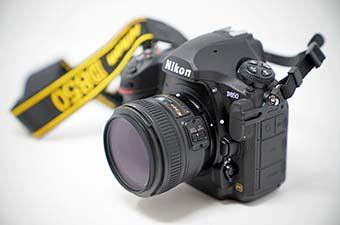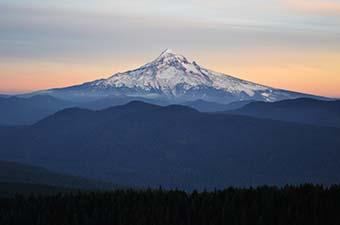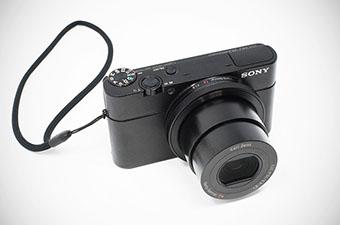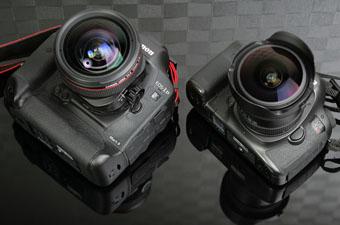The Nikon D5200 is a powerhouse DSLR featuring a 24.1-megapixel sensor and Full HD 1080p video capability. The camera currently is a great value—the release of the D5300 means discounted prices on the older model, and the higher-end D7100 produces similar image quality and is almost twice as expensive. Below are our picks for the best lenses to pair with the Nikon D5200, and keep in mind that the camera has an automatic distortion control built in.
Nikon D5200 Kit Lenses
Nikon 18-55mm f/3.5-5.6 VR ($196.95)
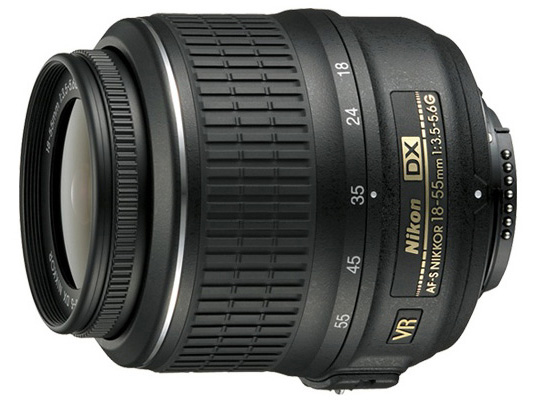 Weight: 9.4 oz.
Weight: 9.4 oz.
Max Aperture: f/3.5
Pros: Lightweight and inexpensive.
Cons: Plastic mount, some distortion at the wide end.
Many kit lenses are cheaply constructed and with marginal optics, but the Nikon 18-55mm VR is an exception. The lens does have a plastic mount but captures sharp images, has vibration reduction, and is a terrific value ($100 with the kit). Overall, it's Nikon's best kit lens. Even if you're going to buy an all-in-one lens or combination of other lenses, it's not a bad idea to get the 18-55mm for its portability and ease of use.
See the Nikon 18-55mm
Nikon 18-105mm f/3.5-5.6 VR ($396.95)
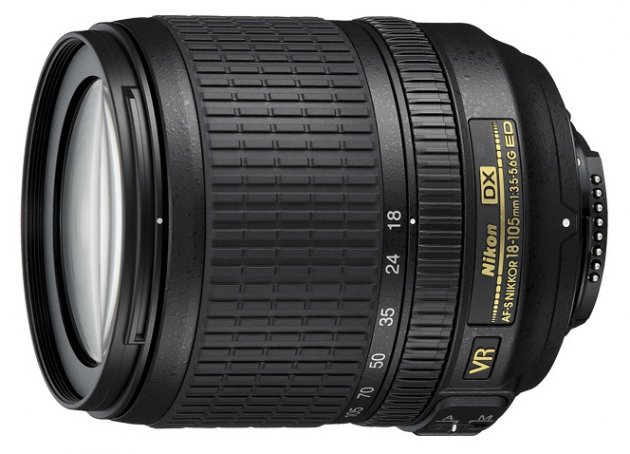 Weight: 14.8 oz.
Weight: 14.8 oz.
Max Aperture: f/3.5
Pros: Versatility.
Cons: Softness in the corners, plastic mount.
The Nikon D5200 is sold with the Nikon 18-105mm lens for $847 total, saving you about $100 on the lens with the kit. Unfortunately, the Nikon 18-105mm is an average lens—it can be soft in the corners, has a plastic mount, and the focal length range isn’t particularly useful. The Nikon 18-55mm kit lens above is sharper, cheaper, and lighter.
See the Nikon 18-105mm Kit
All-In-One Lenses
Nikon 18-200mm f/3.5-5.6 VR II ($497)
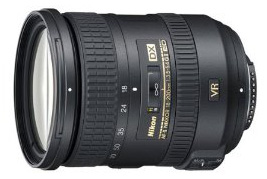 Weight: 19.8 oz.
Weight: 19.8 oz.
Max Aperture: f/3.5
Pros: Versatility.
Cons: Some distortion at the wide end.
The Nikon 18-200mm VR II is a solid all-purpose lens for everything from wide-angle shots to close-ups—many people use it as the only lens in their bag. With an equivalent zoom range of 27-30mm on a 35mm camera, this lens captures sharp images throughout its range and has a sturdy build that is built to last. The biggest shortcoming of the 18-200mm VR II is that it doesn’t quite have the reach for certain types of telephoto photography. Wildlife photographers, for example, often utilize the extra 100mm of length that a lens like the 18-300mm below has to offer. But for travel and use as all-in-one walk-around lens, the 18-200mm is a nice choice and reasonably priced.
See the Nikon 18-200mm VR II
Nikon 18-300mm f.3.5-6.3 VR ($897)
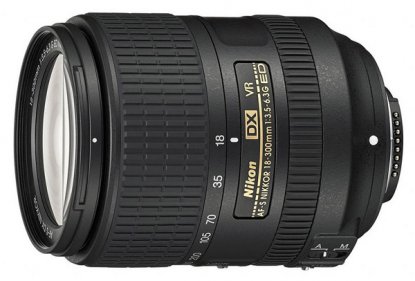 Weight: 19.4 oz.
Weight: 19.4 oz.
Max Aperture: f/3.5
Pros: Extremely versatile.
Cons: Some softness at the long end.
For those who want to cover virtually the entire spectrum of focal lengths without changing lenses, the Nikon 18-300mm VR is an excellent choice. Released in 2014, the new version of this lens is considerably lighter and cheaper than the old one, with the only sacrifice being a maximum aperture at the long end of f/6.3 instead of f/5.6. Amazingly, it even weighs less than the Nikon 18-200mm above.
See the Nikon 18-300mm VR
Sigma 18-250mm f/3.5-6.3 Macro OS ($349)
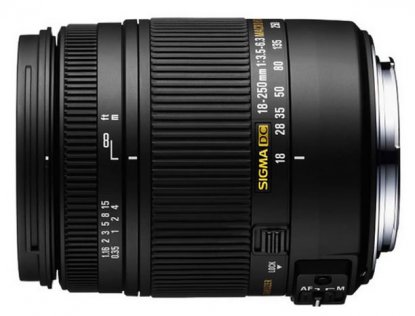 Weight: 16.6 oz.
Weight: 16.6 oz.
Max aperture: f/4
Pros: Cheap and a long zoom range.
Cons: Low light performance and cheap construction.
For an inexpensive all-in-one lens, try the Sigma 18-250mm Macro OS. The biggest selling point here is the price, which is hundreds of dollars less than the two lenses above. You will see an aperture drop-off at the wide end (the lens has Sigma’s Optical Stabilization technology) and some softness in the corners. But the Sigma is a few ounces lighter than the Nikon options, a nice bonus when lugging around your camera bag on vacation.
See the Sigma 18-250mm
Wide-Angle Lenses
Nikon 10-24mm f/3.5-4.5 ($797)
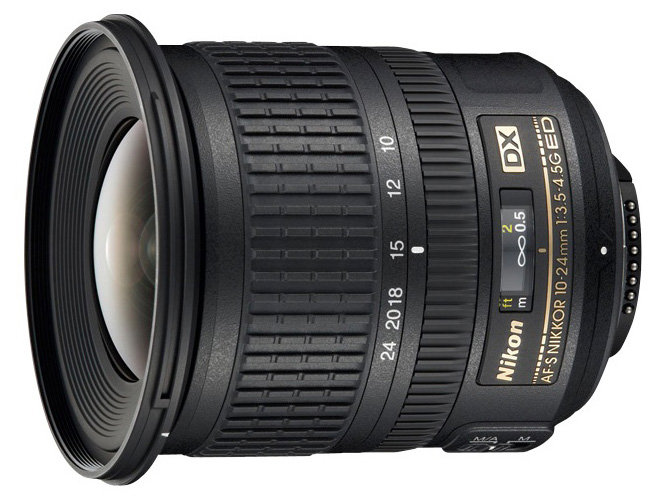 Weight: 16.2 oz.
Weight: 16.2 oz.
Max Aperture: f/3.5
Pros: Nikon’s best DX wide-angle lens.
Cons: Some distortion at the wide end.
The Nikon 10-24mm is Nikon’s best DX format wide-angle lens. It’s wider and sharper than any other comparable lens and excellent for landscape photography and wide-angle architecture and city shots. As is the case with virtually all wide-angle lenses, there is some distortion at the wide end (10mm), and this lens does not have vibration reduction.
See the Nikon 10-24mm
Sigma 10-20mm f/4-5.6 ($379)
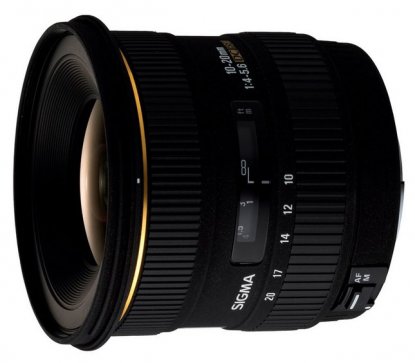 Weight: 18.3 oz.
Weight: 18.3 oz.
Max aperture: f/4
Pros: Another good value from Sigma.
Cons: A bit soft in the corners.
For those who want a good wide-angle lens to pair with the D5200 without breaking the bank, the Sigma 10-20mm f/4-5.6 is the leading budget option. For a very reasonable $379, you get a useful focal length range equivalent of 15-30mm and good optical performance overall. Why is the Sigma 10-20mm so much cheaper than the Nikon option above? The maximum aperture range of f/4-5.6 is workable but not optimal, and the Sigma has more softness in the corners. And despite a plastic build, the lens weighs over 18 ounces.
See the Sigma 10-20mm
Nikon 16-85mm f/3.5-5.6 VR ($499)
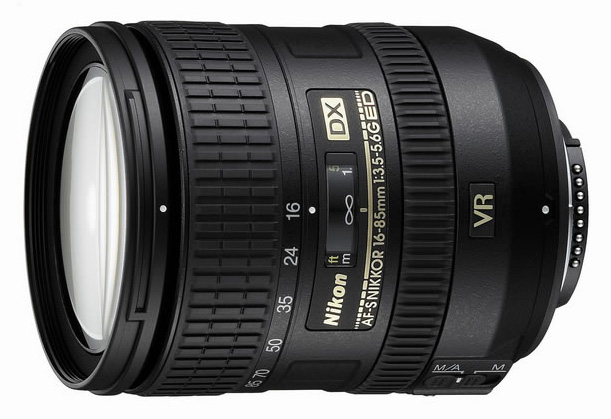 Weight: 17.1 oz.
Weight: 17.1 oz.
Max Aperture: f/3.5
Pros: Excellent optical performance.
Cons: Cost.
Professsionals photographers favor prime lenses, but it’s hard to knock a top-flight zoom like the Nikon 16-85mm f/3.5-5.6. This is a high quality and versatile zoom lens covering focal lengths from wide-angle to close-up portraits. The lens is sharp, has fast autofocus, less distortion than the 18-55mm kit lens or all-in-one lenses above, and vibration reduction. The only thing not to like about Nikon the 16-85mm is the price (you will need add a telephoto zoom for a complete set-up).
See the Nikon 16-85mm VR
Everyday and Portrait Lenses
Nikon 35mm f/1.8 ($177)
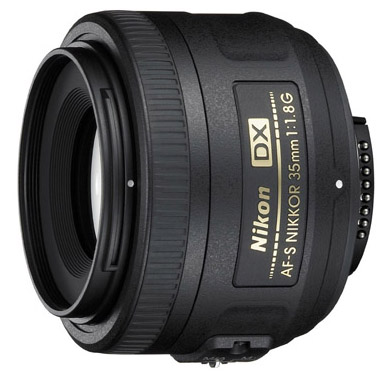 Weight: 7.1 oz.
Weight: 7.1 oz.
Max Aperture: f/1.8
Pros: Low cost, lightweight, excels in low light.
Cons: None.
This 35mm lens on DX is equivalent to 53.5mm on FX, which is great for street photography, travel, and portraits. All things considered, there aren’t any negative things to write about the Nikon 35mm f/1.8. It’s cheap, captures sharp images, has a durable metal mount, and shoots extremely well in low light. You won’t find a better prime lens for the D5200.
See the Nikon 35mm
Nikon 50mm f/1.8 ($197)
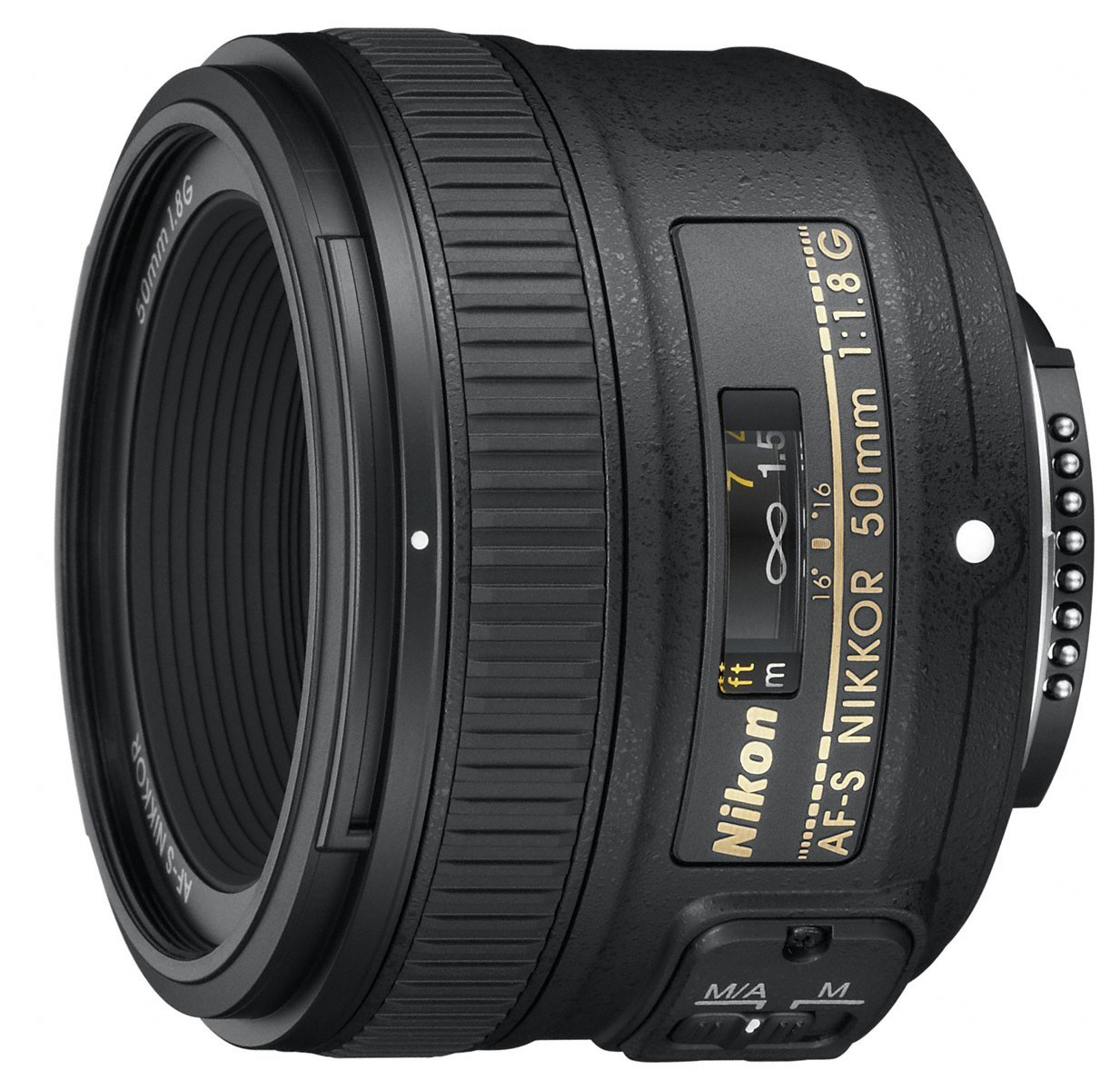 Weight: 6.6 oz.
Weight: 6.6 oz.
Max Aperture: f/1.8
Pros: Low cost, lightweight, excels in low light.
Cons: Technically an FX lens, so you’re paying a bit more.
Similar to the Nikon 35mm above, the popular Nikon 50mm f/1.8 is a great prime lens at a low price. The lens is sharp, performs well in low light, has a fast and accurate autofocus, and weighs only 6.6 ounces. The 50mm f/1.8 is an FX lens but is fully compatible with DX cameras like the Nikon D5200 with an effective focal length of 75mm.
See the Nikon 50mm
Telephoto Zoom Lenses
Nikon 55-200mm f/4-5.6 VR ($223)
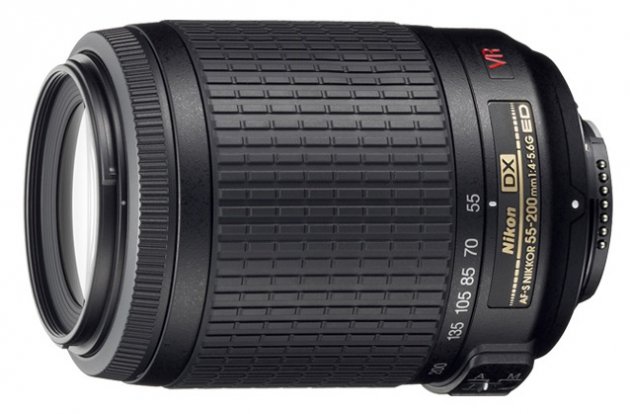 Weight: 11.8 oz.
Weight: 11.8 oz.
Max Aperture: f/4
Pros: Low cost, lightweight.
Cons: Plastic mount.
If you bought the 18-55mm kit lens above, adding a 55-200mm lens is a great way to complete your kit and cover the telephoto end of the spectrum. You have two options here: in 2015 Nikon released a new version of the 55-200mm that is slightly lighter and more compact. Given that the new 55-200mm VR II is $349 at press time, for the D5200 we recommend saving the older version. Both have the same focal length and aperture range are very similar optically. For a longer reach, try the 55-300mm lens below.
See the Nikon 55-200mm VR
Nikon 55-300mm f/4.5-5.6 VR ($397)
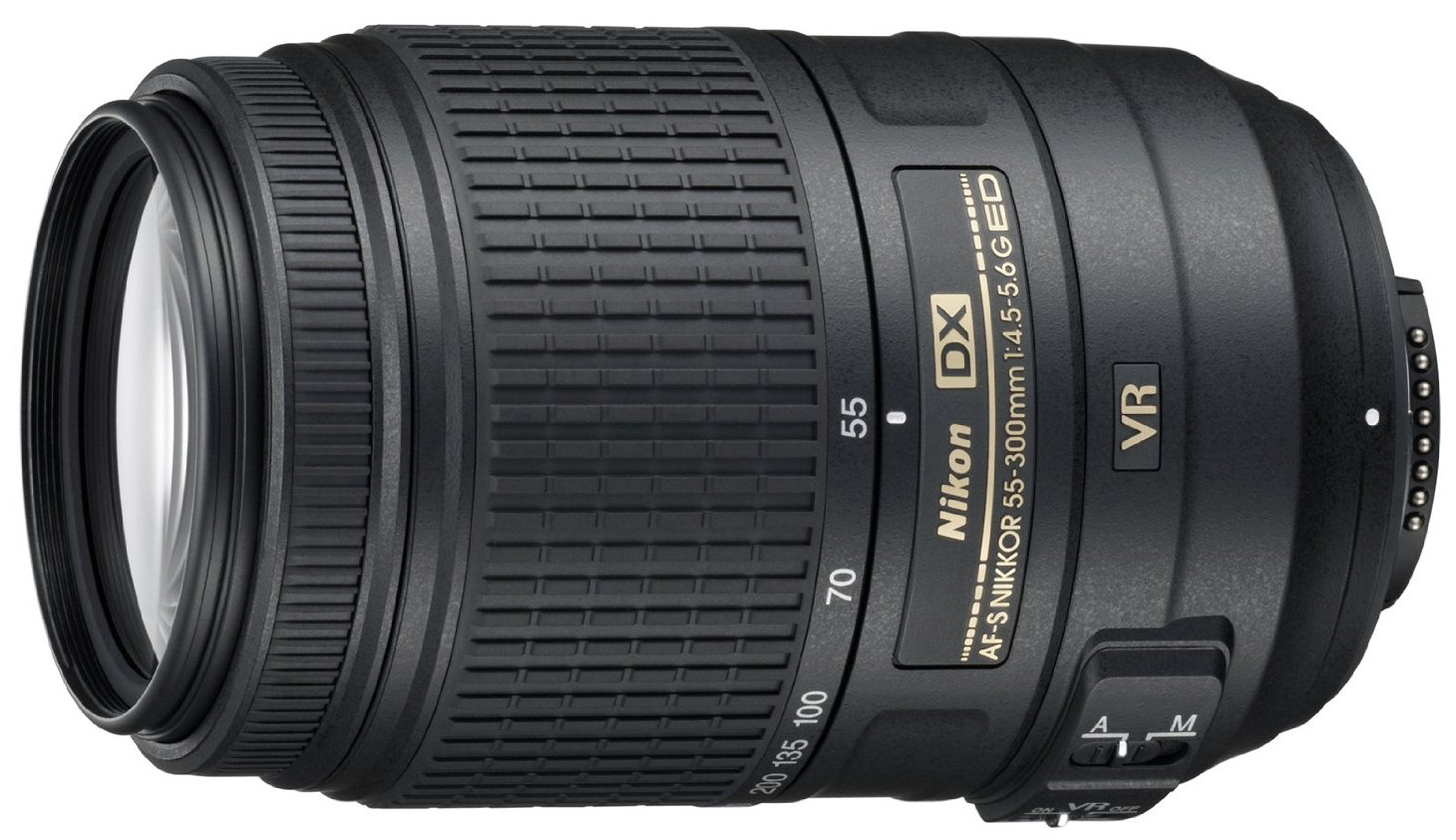 Weight: 18.7 oz.
Weight: 18.7 oz.
Max Aperture: f/4.5
Pros: Versatility.
Cons: Autofocus can be slow.
The Nikon 55-300mm VR is the top telephoto zoom for DX cameras. The lens captures sharp images, good colors, and features vibration reduction (camera shake can be an issue with long zoom lenses). We like the extra 100mm of zoom range, which can make the difference for wildlife and other close-ups.
See the Nikon 55-300mm VR
Nikon D5200 Lens Comparison Table
| Lens | Price | Type | Aperture | Weight | VR | Filter |
|---|---|---|---|---|---|---|
| Nikon 18-55mm f/3.5-5.6 VR II | $196.95 | Kit | f/3.5-5.6 | 6.9 oz. | Yes | 52mm |
| Nikon 18-105mm f/3.5-5.6 VR | $397 | Kit | f/3.5-5.6 | 14.8 oz. | Yes | 67mm |
| Nikon 18-200mm f/3.5-5.6 VR II | $497 | All-in-one | f/3.5-5.6 | 19.8 oz. | Yes | 72mm |
| Nikon 18-300mm f/3.5-6.3 VR | $897 | All-in-one | f/3.5-5.6 | 19.4 oz. | Yes | 72mm |
| Sigma 18-250mm f/3.5-6.3 OS | $349 | All-in-one | f/3.5-6.3 | 16.6 oz. | Yes | 62mm |
| Nikon 10-24mm f/3.5-4.5 | $797 | Wide angle | f/3.5-4.5 | 16.2 oz. | No | 77mm |
| Sigma 10-20mm f/4-5.6 | $379 | Wide angle | f/4-5.6 | 18.3 oz. | No | 77mm |
| Nikon 35mm f/1.8 | $177 | Everyday | f/1.8 | 7.1 oz. | No | 52mm |
| Nikon 50mm f/1.8 | $197 | Everyday | f/1.8 | 6.6 oz. | No | 58mm |
| Nikon 16-85mm f/3.5-5.6 VR | $499 | Everyday | f/3.5-5.6 | 17.1 oz. | Yes | 67mm |
| Nikon 55-200mm f/4-5.6 VR | $223 | Telephoto | f/4-5.6 | 11.8 oz. | Yes | 52mm |
| Nikon 55-200mm f/4-5.6 VR II | $347 | Telephoto | f/4-5.6 | 10.6 oz. | Yes | 52mm |
| Nikon 55-300mm f/4.5-5.6 VR | $397 | Telephoto | f/4.5-56 | 18.7 oz. | Yes | 58mm |


